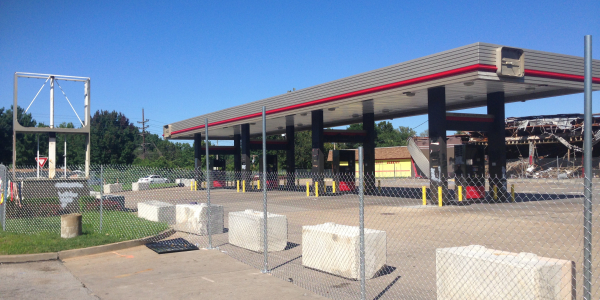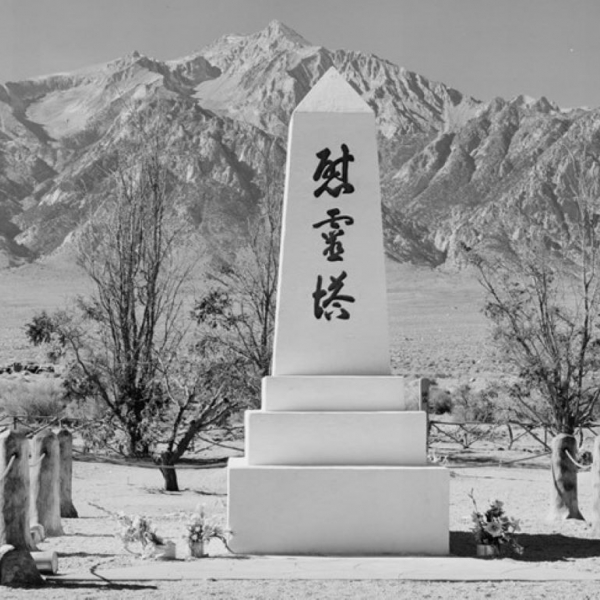"Obviously when a disaster has occurred, it will be too late to conduct the assessment of the historic character and fabric of a building," wrote National Park Service Preservation Assistance Division Chief E. Blaine Cliver in 1998. Yet is it really too late to assess the character of the Ferguson QuikTrip within the framework of American historic preservation practice? After all, the Ferguson QuikTrip is historic in any meaningful sense only for its association with the looting that led to destruction by fire. The blown-out appearance would be a "defining characteristic" in any cultural resource assessment.
Of course, most people would probably fail to find the Ferguson QuikTrip "historic" or worthy of architectural conservation. The facility itself was a generic stock design, matching hundreds across the nation. The events that unfolded in August were widely condemned by people with divergent perspectives on the death of Michael Brown, the resulting demonstrations, and the culture of policing in Ferguson. Everyone, it seemed, held the looters of the QuikTrip to be villains. Demonstrators disavowed their actions.
Yet historical moments cannot be disclaimed because they offer problematic or unresolved narratives. Sites associated with history's darker instances -- assassinations, terrorism, mass conflict, environmental degradation -- confound our identities but compel sensitive treatment by preservationists. In fact, historic preservation has led to the expansion of National Register if Historic Places or other official designations on sites including the Lorraine Motel in Memphis, site of the assassination of Dr. Martin Luther King; the Ku Klux Klan meeting hall in Fort Worth; and the decimated Lower Greenwood neighborhood in Tulsa, which essentially disappeared after racial rioting. At the Texas School Book Depository in Dallas, the sixth floor window where Lee Harvey Oswald aimed his rifle at John F. Kennedy is left permanent in the position where the gunman set it -- an unsettling reminder of the gravity of the building's role in the Kennedy assassination. Official and intellectual preservation practice has not always avoided difficult sites, but many of local significance remain unexamined or dismissed by preservationists.
In cases where the buildings are too damaged or literally toxic to preserve, historic preservation gives way to public historical efforts at commemoration or embedded interpretation, like the 9/11 Museum in New York or the Oklahoma City Memorial. The Ferguson QuikTrip, mangled beyond reuse and of dubious architectural value without its association with the looting, may seem best suited to follow. Yet the QuikTrip wreckage is not particularly hazardous, and the building is not posed to collapse. Gasoline, signifier of the site's literal potential for combustion, is now gone.
A strict preservation approach to the Ferguson QuikTrip would have to assess the site against the National Register of Historic Places standards for "exceptional significance," a requirement if a property is to receive listing before turning 50 years of age. Here is where preservation appears to be anything but iron-clad rules. The determination of "exceptional significance" relies on historicizing that is not yet complete. While the demonstrations of August 2014 will likely remain historically significant given their intensity and duration compared to previous civil and victim rights organizing around St. Louis, the importance of what happened at QuikTrip may be malleable if there are ongoing demonstrations related to the investigation of the Michael Brown death.
When history has coursed to a point where a determination about preservation of the actual QuikTrip facility is better, it likely will be erased. The facility is private property, while most of the examples cited here became publicly owned due to overwhelming public consensus of their importance. Still, the urges of QuikTrip may not be the only reason the building never meets the assessment of preservation officials. Official preservation activities always already reflect the politics of memory. Ferguson remains contested public memory, rendering the preservation or commemoration of QuikTrip -- even with the most apolitical curatorial intent -- an act of confrontation.
sources
Cliver, E. Blaine. "Assessing the character and systems of historic buildings." Disaster Management Programs for Historic Sites. Dirk H.R. Spennemann and David W. Look, editors. San Francisco: Association for Preservation technology, Western Division, 1998.
Photo Credit: Michael R. Allen. The QuikTrip stands nearly monumental behind the chain link fencing.





